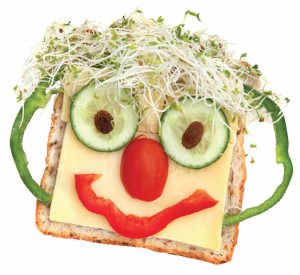Is trying to persuade your child to try new foods a daunting task? Are your efforts to introduce new foods to his palate often met with cries, tantrums and screaming? If yes, your child may be going through a development phase called “food neophobia”.
What is food neophobia?
It is a behaviour that is characterised by the unwillingness to try new foods in young children. As the word neo- means “new”, and the word – phobia means “fear”, food neophobia literally means a fear of trying new foods. The phenomenon is also referred to as fussy eating or picky eating.
Food neophobia stems from your child’s in-built mechanism to instinctively avoid foods that are unfamiliar, as they could be potentially harmful or poisoned. This phenomenon is common in children aged two to seven, or sometimes even older children but will gradually decrease as the child gets older.
Another explanation for food neophobia is that by the age of two, your child may already have an idea on what foods should look and smell like, so when you introduce new foods that do not fit his perception, they are quickly rejected.
Foods your fussy eater “fears”
Food neophobia in children has been associated with a low intake of fruit, vegetables and protein foods. Green vegetables, for example, often have a tinge of bitterness. Children’s taste buds will tell them that bitter foods are potential poisons, hence that spurned look on your child’s face when you try to feed him a spoonful of dark greens.
Proteins such as egg, fish and poultry are also commonly met with clenched teeth in fussy eaters. One explanation for this is because protein may be suggestive of decay. Even adults may resist or refuse to consume unfamiliar proteins, such as horse or rabbit meat.
Health and developmental problems
Food neophobia may produce adverse and longterm repercussions on your child’s overall growth and development. Food consumption based on limited food choices may result in inadequate intake of a variety of nutrients and other food components. For example, a lack of fruits and vegetables in your child’s diet may deprive him of essential micronutrients and dietary components such as fibre and phytochemicals that are beneficial to health.
To maintain good health, the Malaysian Food Pyramid encourages everyone to eat balanced meals comprising a variety of food in moderate amounts.
Balanced meals should consist of foods from all the five major groups that are highlighted in the pyramid. They are: 1) carbohydrate foods (e.g. rice, bread, cereals, and noodles), 2) fruits, 3) vegetables, 4) fish, poultry, meat, eggs and legumes, and 5) milk and milk products.
Children should eat in moderate proportions, so that they do not under-eat or over-indulge. Both habits could lead to future malnutrition problems.
More importantly, a growing child needs to consume a variety of foods from each food group, to ensure that they get all the nutrients that they need. A child with food neophobia is not able to achieve this as he may be inclined to stick to just one food type or food group. In addition, he may not be able to get the adequate calories his body requires for physical and mental growth.
Studies have indicated that children aged four to five years old with food neophobia generally have poorer growth status compared to children who were more willing to try new or unfamiliar foods.
Food neophobia could also influence your child’s dietary preferences later in life. For example, if you’ve stayed away from vegetables as a child, he will likely steer clear from veggies as an adult as well.
Feeding the fussy eater
If you are worried about your child’s refusal to try new foods, here are a few helpful tips that can help your child diversify his palate:
- Paint a pretty picture – Children depend on their descriptive sensory (e.g. visual, odour, and taste exposures) to navigate around the foods they eat. So, describe the new food you intend to introduce to him in an imaginative way and give him some nutritional information about the food. Information can be helpful to increase his willingness to try new foods and reduce his food neophobia.
- Don’t stop trying – Just because you want to avoid trouble and save time, you may be tempted to choose to get rid of the “problematic” foods in your child’s plate and be done with it or resort to bribery. Avoid these strategies if you want your child to eat everything and be well-nourished.
- Start young – Let’s face it, children are inexplicably drawn to foods that are sweet, salty, crunchy or spongy in flavours and texture and seem to reject foods that are bland, fibrous or sour. In fact, your child may have developed his preferred flavours and textures from inside the womb itself, from the foods that you ingested. The key is to expose your child to new foods from a young age because this is the time he is deciding what tastes and textures he likes best.
- Wait for the hunger cues – If you are introducing a new food, make sure your child is hungry. That way, he is more likely to accept it. However, don’t force your child to eat something new that he doesn’t want; just try again another day. If he thinks eating that new food is very important to you, he will simply use the situation as a way of manipulating you to get what he wants. Don’t fall into that trap.
- Repeat, repeat, repeat – If your child rejects a new food that you introduce to him, research has shown that sometimes, the new food has to be introduced to him repeatedly (up to eight or 15 times) before he accepts it. This doesn’t mean forcing your child to eat the food but instead gently encouraging him to taste it. It may take some time before he becomes familiar with a certain food, but once that happens, he will usually accept it.
- Lead by example – You can play a role here by eating the new food too. Your child is more likely to try the suspicious new food if he watches you eat it and “survive” the experience first. Show him how much you enjoyed eating the new food by your facial expressions.
- Get him involved – Let your child watch you cook so that he can smell the aromas of foods cooked and ask him his opinion on the taste, texture and flavour of the food. You could also get him to assist you in the preparation of meals (e.g. washing the veggies or peeling onions and garlic for garnishing). Your child is more likely to eat a nutritious meal if he has had a hand in preparing it.
- Presentation is key! – When introducing a new food to your child, serve it on a plate in a decorative manner or cut them up into little cubes (if possible). For example, if you are introducing fruits and vegetables like bananas and tomatoes to your child, slice them up into round shapes and decorate them on a plate to look like a ‘face’. Experiment with the different colours of fruits and vegetables to help you.

As parents, you play a key role in helping your child overcome his food neophobia. With a little patience and the help from these tips, you will be able to diversify your child’s palate, thereby avoiding any nutritional deficiencies that may result from this unhealthy personality trait.






Comments